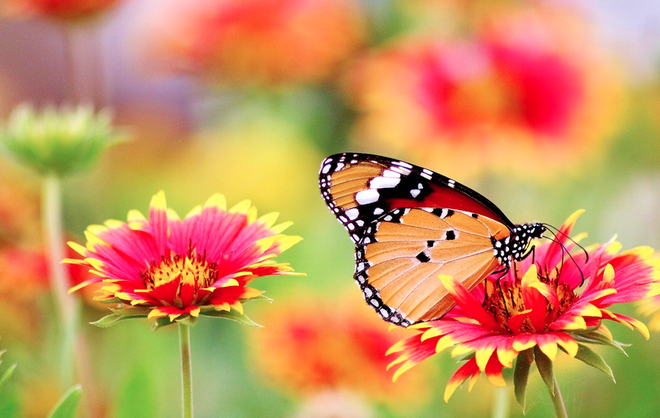Earth Day History
20 million Americans from coast to coast took to the streets to celebrate the first Earth Day in 1970. Prompted by the large 1969 oil spill in Santa Barbara. Earth Day sought environmental protection and to raise awareness and advocacy. They advocated for a healthier, sustainable environment. The United States Environmental Protection Agency and the Clean Air, Clean Water, and Endangered Species Act were responses of change.
Moving to modern day, more than one billion people worldwide celebrate Earth Day worldwide. Continued advocacy for choices that align community actions with a sustainable environment.
Why a Butterfly Garden: For Them
According to Jeffery Glassberg, “the single most important factor to the decline of butterflies is habitat loss.” Butterflies are pollinators of food and flowers. Bright flowers attract butterflies. Feeding from the nectar and pollinating other plants as they go. An important part of their habitat requires a foraging ground for caterpillars. They need to find food to feed and thrive. The entire life cycle must be supported.
Why a Butterfly Garden: For You
Butterfly gardens can be a great way to create a relaxing space for you to enjoy, and they are simple to create. Your garden can be large or a few pots in size depending on your available space, it's up to you! Once completed, you can enjoy watching the butterfly life cycle, caterpillar to winged beauties.
Let’s look at how to create your personal butterfly garden.
Plants You Will Need
Feature a variety of plants in your garden that bloom from the beginning of spring through the fall. The Butterfly Milkweed, Scarlet Beebalm, and Black eyed Susan are all North Carolina natives.
Suggested Caterpillar host plants
Trees and Shrubs :Blueberries, Black Cherry and Tuliptree, Gray Dogwood, Hoptree
Perennials: American Senna, Blue Wild Indigo, Violets, Milkweed, and Asters
Nectar Plants (including above suggestions)
Common Buttonbush and Coastal Sweetpepperbush
Sunburst Yellow Coneflowers
Goldenrods and bright Aster hues (for later summer and fall)
Garden Tip: Despite the name, AVOID the butterfly bush. It lacks nutritional value and is not recommended as a host plant.
Your garden needs to feed your butterflies throughout their lifecycle. Host plants such as milkweed and parsley feed your caterpillars. Nectar plants like marigolds, lavender, and aster will feed the adults. Knowing about your local butterfly species and their plant preferences is helpful. Common species in eastern NC are thr Spicebush Swallowtail, Little Yellow, and Monarch.
Give a Place to Rest
Busy butterflies will need to rest throughout their day. Make sure you leave a few bare areas with flat rocks for sunning. Ensure a few shady spots so they can cool down too. This will let them rest as well as regulate their body temperatures. Small trees or shrubs provide shelter, protection, and a place to hide from predators.
Butterfly Fact: Monarch butterflies travel up to (and sometimes over) 4000 km each migration.
Offer a Water Source
Nectar, dew, and sap will provide your butterflies with moisture, but they still need water. You can add a small bird bath, which also provides a sturdy location for them to pupate. Or you can bury a small pie tin and fill it with gravel, sand and water. Your hydrating station can even be as simple as a damp area in the shade covered in wet sand.
Butterfly Fact: Scientists estimate there are between 15,000 and 20,000 different species of butterflies.
Keep Butterflies Coming Back
And last you have your maintenance; luckily, butterfly gardens don't need much! Weed as needed, trim to your liking, and water the plants as well as your hydrating station. Don't worry if you see some lightly chewed up leaves, it means you have a healthy and active garden for your butterflies!
Celebrate this Earth Day by planting a beautiful butterfly garden. We would love to see photos of your garden this Spring. Tag us #mayexterminating so we can locate you.
Do you have a friend that would enjoy this article? Share and tag to spread some butterfly love this Earth Day.


Recent Comments